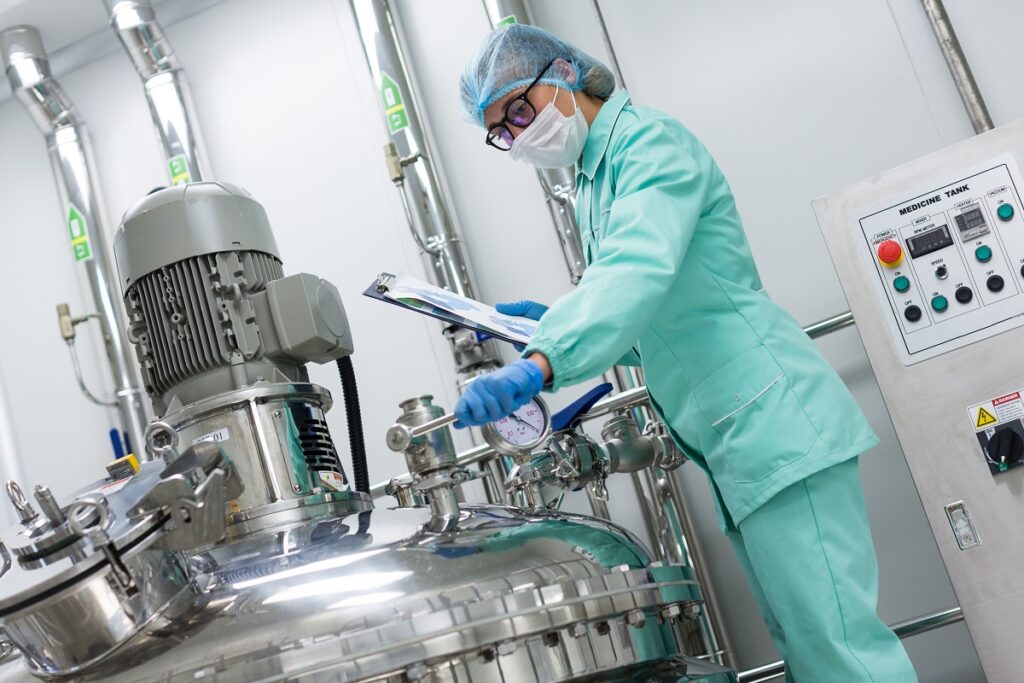- Consider compliance with regulatory standards so that the laboratory meets minimum standards and is safe for staff and patients.
- Select materials that are appropriate for the lab environment and resistant to corrosion or contamination
- Design the laboratory layout to maximize space, improve workflow, and prevent cross-contamination.
- Choose high-quality equipment that is reliable, accurate, and suitable for the tests conducted in the lab.
- Implement safety measures, such as using personal protective equipment and emergency protocols in case of accidents.
Medical laboratories are essential in the healthcare industry as they play a vital role in diagnosing, treating, and preventing diseases. The construction of a medical laboratory is a significant investment in the healthcare industry, so it is necessary to consider several aspects.
Building a state-of-the-art medical laboratory requires careful planning and execution. This article will discuss what you must consider when constructing a medical laboratory.
Compliance with Regulatory Standards
The construction of a medical laboratory is a complex process that requires thorough planning and compliance with several regulatory standards. Any mistake made during the construction phase would have a detrimental effect on the quality of the laboratory and could pose a significant risk to the health and safety of patients and laboratory personnel.
Accreditation Standards
Several accreditation bodies exist to ensure that medical laboratories meet the minimum standards necessary to guarantee quality. Accreditation can be international (ISO/IEC & ISO 15189), national (CLIA, COLA, & CAP), or specialized (FACT, AABB). During the laboratory construction process, accreditation standards must be put into consideration.
Installation of Equipment

Installing equipment is a critical aspect of the laboratory construction process. The equipment must be quality, relevant to the laboratory’s function, and correctly installed. Every piece of equipment must have a certification or calibration, and accredited professionals must perform the mechanical and electrical installations.
Personnel Safety
Personnel safety is paramount in any medical laboratory. The laboratories must have training and safety procedures that adhere to federal, state, and local laws and regulations. Everyone working in the laboratory must be certified and trained to handle laboratory chemicals, equipment, and machinery.
Post-Evaluation
After a laboratory construction project is completed, evaluations must be done to ensure that the laboratory meets all the necessary regulations and standards. Evaluations include reviewing the permit & certification process, inspecting the finished laboratory, equipment, and instrument installations, checking staff training and documentation, and any emergency procedures.
Materials
When constructing a medical laboratory, selecting suitable materials is crucial to ensure the facility functions safely and efficiently. The materials you choose should withstand the specific demands of the lab environment, including chemicals, heat, and cold temperatures.
That’s where an industrial piping supplier comes in handy. They can provide durable piping solutions that meet the exact requirements of your lab. PVC, steel, and copper piping are all viable options to consider, depending on your lab’s applications. Additionally, it’s essential to choose materials resistant to corrosion and contamination to maintain a sterile environment.
Laboratory Design
Every laboratory has specific space requirements, and the design must be customized according to the tests conducted, laboratory equipment, and personnel requirements. Conducting feasibility studies to identify a suitable location for the laboratory is essential.
Once the laboratory site is determined, the laboratory’s design should be optimized to maximize the available space, improve workflow and ensure staff safety. To avoid cross-contamination, the laboratory layout must incorporate clear separation for specimen paths and clean areas.
Equipment Selection
Laboratory equipment is the most essential aspect of medical laboratories; therefore, choosing the right equipment is critical. The selection of equipment depends on the tests the laboratory conducts, the laboratory budget, and the laboratory space. The lab equipment should be high quality, accurate, and reliable to ensure the quality of results. A laboratory equipment supplier can assist in determining suitable equipment based on laboratory needs.
Safety Measures

A medical laboratory is a hazardous workplace, so it is crucial to implement safety measures to protect personnel and prevent accidents. Strategies to protect personnel include using personal protective equipment, installing fume hoods, emergency showers, and eye-wash stations. The laboratory must have a safety protocol established in case of accidental exposure or hazardous materials spill. It is essential to have a proper evacuation plan in case of fire or other emergencies.
Final Thoughts
Starting a medical laboratory is a significant investment that requires careful planning, execution, and ongoing management. Adhering to regulations, proper laboratory design, equipment selection, staff qualifications, and laboratory safety measures are fundamental factors to consider when building a medical laboratory.
These considerations are essential for creating an efficient and effective medical laboratory. Considering these factors, one can set up a medical laboratory that provides accurate and reliable results for years.

